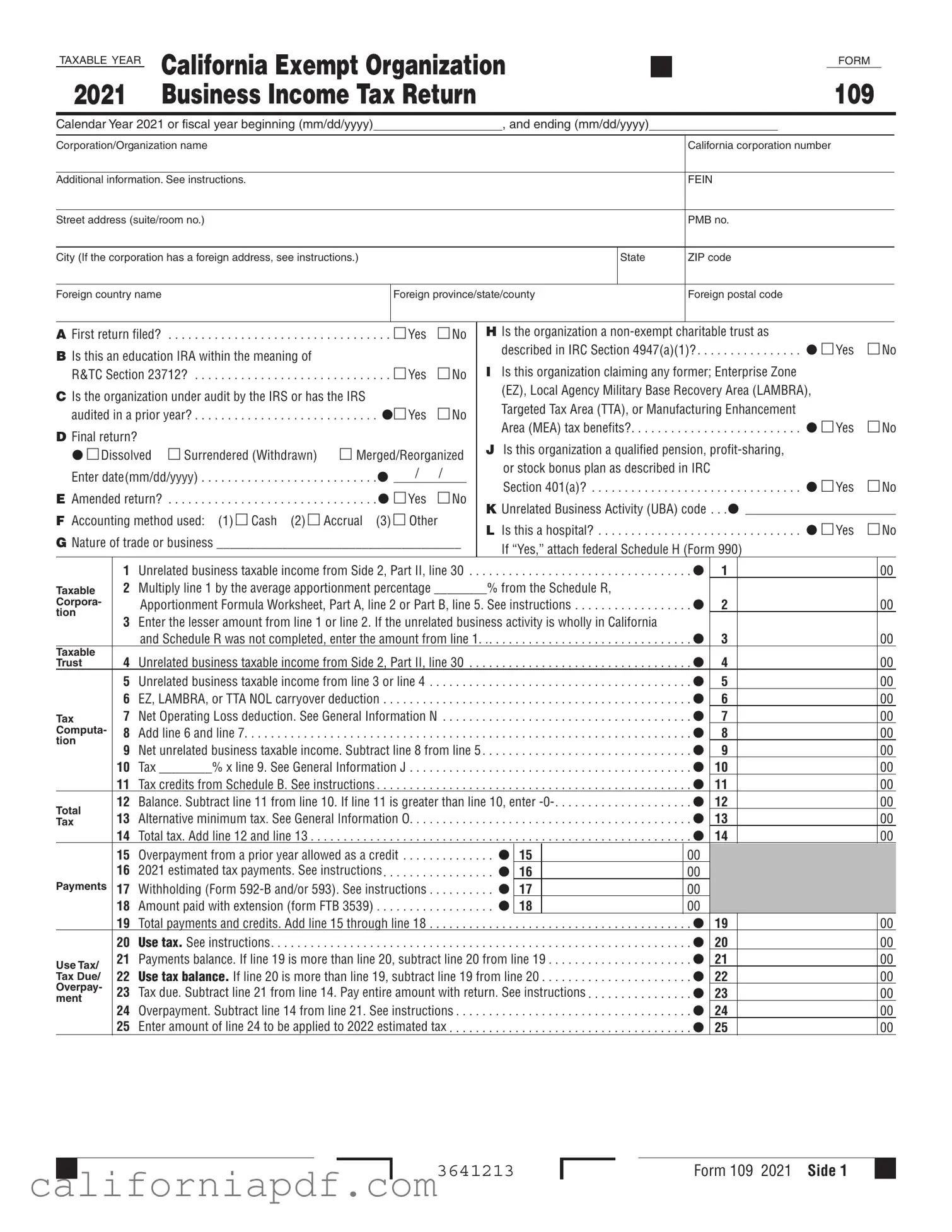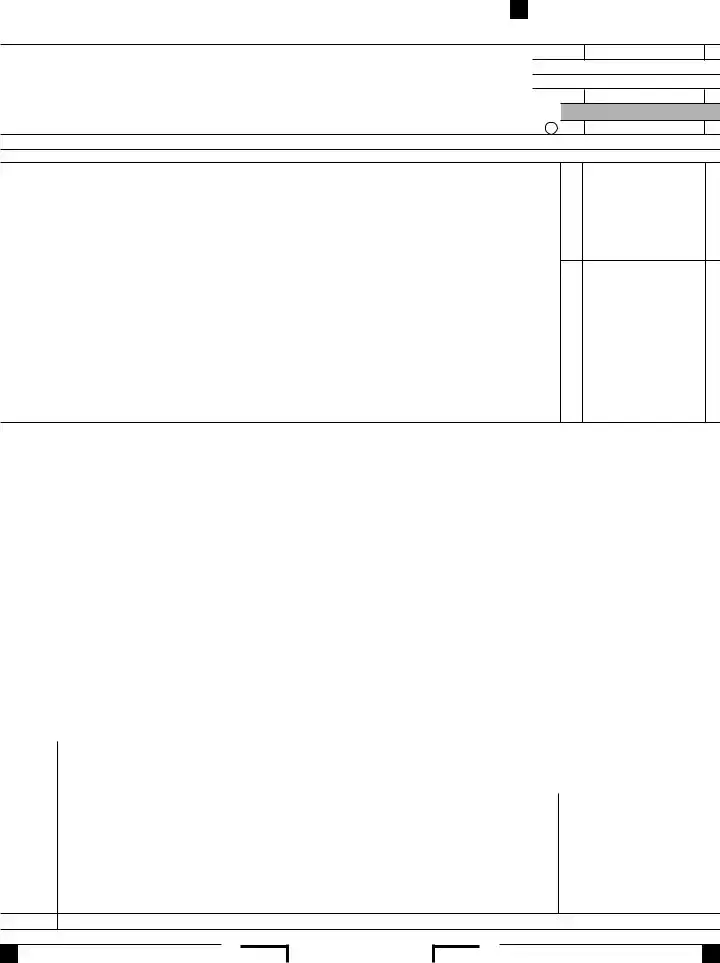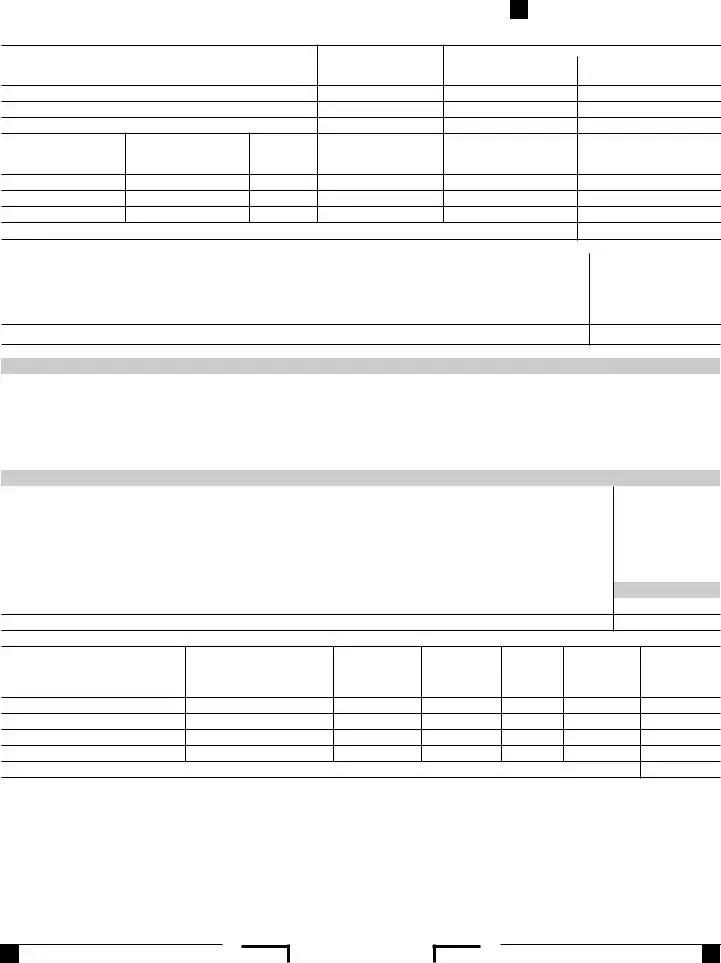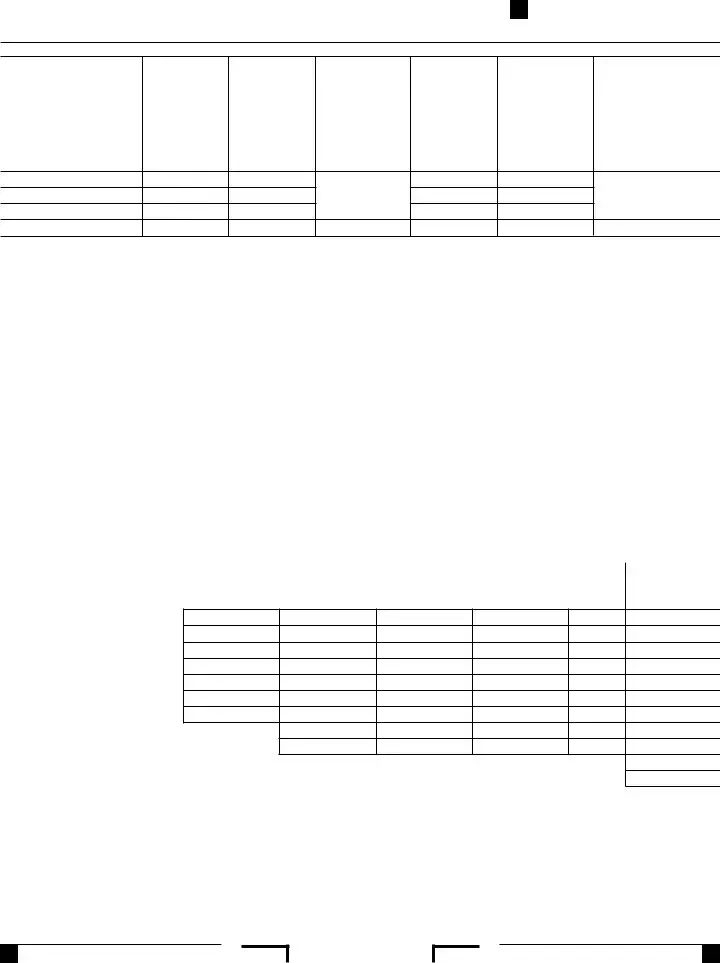The California 109 Form is akin to the U.S. Internal Revenue Service's Form 990-T, Exempt Organization Business Income Tax Return. Both forms are used by tax-exempt organizations to report and pay income tax on unrelated business income. They require detail on income, deductions, and net taxable income, ensuring organizations comply with tax regulations on income not related to their exempt purposes.
Similarly, the California Form 199, the Exempt Organization Annual Information Return, parallels the federal IRS Form 990. While Form 109 focuses on taxable business activities, Form 199 and Form 990 gather comprehensive information about an organization's overall operations, financial status, and compliance with exemption requirements, highlighting differences in focus between income reporting and organizational transparency.
The California Form 568, Limited Liability Company Return of Income, shares common features with Form 109 in terms of reporting income, deductions, and taxes due. Both forms cater to entities that must declare income generated within California, but Form 568 is specifically designed for LLCs, including those managed by tax-exempt organizations for their unrelated business income.
Form 1120, U.S. Corporation Income Tax Return, also shares similarities with the California 109 Form, as both are used by entities to report income, losses, and taxes owed. Though Form 1120 is for for-profit corporations, it mirrors the structure and purpose of Form 109 in its focus on taxable activities, albeit within different organizational contexts.
The California Form 541, California Fiduciary Income Tax Return, is analogous to Form 109 when trusts engage in unrelated business activities. While Form 541 caters to the broader income reporting requirements of trusts and estates, sections of it are dedicated to unrelated business taxable income, similar to the reporting obligations under Form 109 for exempt organizations.
California Form 100, Corporation Franchise or Income Tax Return, serves a similar function to Form 109 but is tailored for corporate entities. Both forms require detailed financial reporting and computation of tax liabilities, ensuring entities fulfill their tax obligations based on their income levels in the state of California.
Form 990-EZ, Short Form Return of Organization Exempt from Income Tax, under federal tax law, is a simpler version of Form 990 and akin to Form 109 in that it offers a shorter, less detailed format for smaller tax-exempt organizations to report on their operations and financial status, albeit without the specific focus on unrelated business income.
The Schedule K-1 (Form 1065), Partner's Share of Income, Deductions, Credits, etc., indirectly relates to Form 109, as it is used by partnerships (including those involved in tax-exempt organizations' unrelated business activities) to report each partner's share of income or loss. Though serving different functions, both forms play key roles in reporting income for tax compliance purposes.





